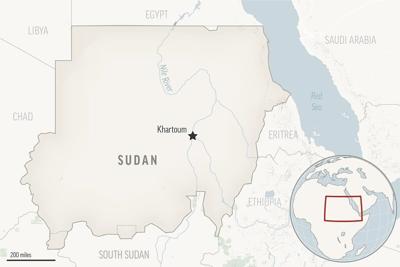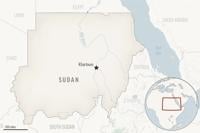CAIRO (AP) — Outbreaks of cholera and dengue fever have been reported in eastern Sudan, where thousands of people are sheltering in crowded camps amid deadly fighting between the country's military and a rival paramilitary force, the U.N. health agency said on Tuesday.
According to , 162 people suspected of having cholera were admitted to hospitals in Qadarif province and other areas along Sudan's border with Ethiopia. Eighty cases have been confirmed, and 10 people have died of linked to contaminated food or water, WHO said.
Sudan was engulfed in chaos in mid-April, when simmering tensions between the military and the powerful paramilitary group exploded into open warfare in the capital, Khartoum, and other areas across the east African nation.
The medical charity Doctors Without Borders has set up two centers to treat cholera patients along with two mobile teams in Qadarif. WHO and the U.N. refugee agency have renovated the isolation center for cholera at the Qadarif Teaching Hospital, the province's main medical facility.
Cholera outbreaks are not uncommon in impoverished Sudan. in less two months during the country's last major outbreak in 2017.
In Ethiopia, a cholera outbreak that started in August 2022 has sickened at least 20,000 people and caused more than 270 deaths, according to WHO. The outbreak has affected seven regions, including areas along the border with Sudan.
WHO said more than 500 suspected cases of dengue were reported across Sudan, most of them in urban centers in Qadarif. Dengue is caused by the dengue virus transmitted to humans through the bite of infected mosquitoes.
The reported figure was “the tip of the iceberg” as the actual number is much higher, given that most of the patients rely on home remedies and often do not go to hospitals, WHO said.
The Sudanese doctors union says “hundreds” of dengue patients have died in the country's east, describing the outbreak as “a health crisis.” It did not give a time frame for the deaths but said most hospitals in Qadarif have been overwhelmed by patients.
Heavy rains and flooding, meanwhile, have destroyed or damaged at least 13,000 houses in seven provinces across Sudan since July, according to the U.N. Office for the Coordination of Humanitarian Affairs. More than 72,000 people have been affected, OCHA said.
The World Health Organization reported last month that while poverty and conflict remain enduring drivers for cholera around the world, more power storms and flooding from climate change are also .
The conflict in Sudan has turned Khartoum and other urban areas into battlefields, wrecking civilian infrastructure and an already battered health care system. Without the basics, many hospitals and medical facilities have closed doors.
At least 5,000 people have been killed and more than 12,000 others wounded, according to the United Nations, though the actual numbers are likely higher. The U.N. refugee agency said last week that under the age of 5 have died in nine camps in Sudan in the past five months because of a deadly combination of measles and malnutrition.
More than 5.2 million people have fled their homes, including more than 1 million who crossed into Sudan’s neighboring countries. Half of the country’s population — around 25 million people — needs humanitarian assistance, including about 6.3 million who are “one step away from famine,” according to U.N. humanitarian officials.








































